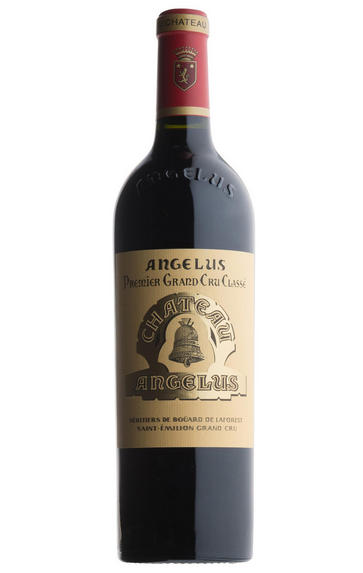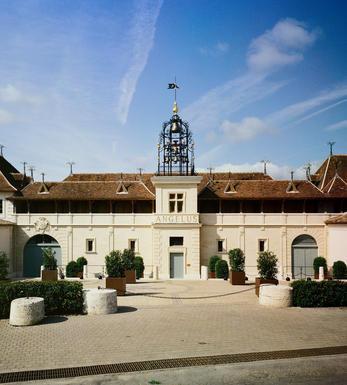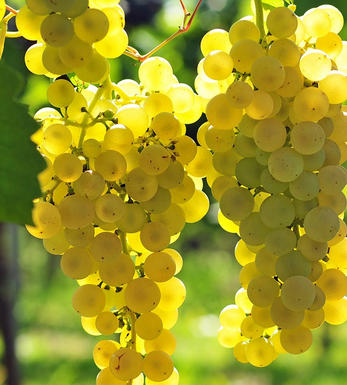
2022 Château Angélus, St Emilion, Bordeaux

Critics reviews
Lisa Perrotti-Brown, The Wine Independent (May 2023)
Jane Anson, janeanson.com (May 2023)
Jancis Robinson MW, jancisrobinson.com (May 2023)
This estate's shift in the direction of gentler extraction and more reductive, less overtly oaky élevage continues, and this extreme vintage only underlines that. Fermented at cool temperatures (20 to 23 degrees Celsius), and with an increasing proportion of the wine's Cabernet Franc component matured in large wooden foudres, the 2022 Angélus wafts from the glass with deep aromas of dark berries and cherries mingled with hints of iris, licorice and pencil lead. Full-bodied, deep and seamless, with a layered core of cool, vibrant fruit, powdery tannins and a long, saline finish, it's a brilliant young wine in the making. The 2022 is a blend of 53% Merlot, 46% Cabernet Franc and 1% Petit Verdot.
Wine Advocate (April 2023)
About this WINE

Château Angélus
Château Angélus is one of the largest and most prestigious estates in St Emilion. It was promoted to Premier Grand Cru Classé A status in the 2012 reclassification. The de Boüard family has made wine here since 1782. The estate is now run by eighth-generation Stéphanie de Boüard-Rivoal, who took over from her father, Hubert de Boüard de Laforest, and uncle, Jean-Bernard Grenié, in 2012. It is located in centre-west of the St Emilion appellation, due west of the medieval town.
Angélus’s 39 hectares of vineyards are situated less than a kilometre away from the famous St Emilion steeple. The site enjoys a perfect southerly-exposed slope. Cabernet Franc is grown at the bottom, where the soils are sandier and warmer; Merlot is grown in the limestone-rich clay soils at the top of the slope.

St Émilion
St Émilion is one of Bordeaux's largest producing appellations, producing more wine than Listrac, Moulis, St Estèphe, Pauillac, St Julien and Margaux put together. St Emilion has been producing wine for longer than the Médoc but its lack of accessibility to Bordeaux's port and market-restricted exports to mainland Europe meant the region initially did not enjoy the commercial success that funded the great châteaux of the Left Bank.
St Émilion itself is the prettiest of Bordeaux's wine towns, perched on top of the steep limestone slopes upon which many of the region's finest vineyards are situated. However, more than half of the appellation's vineyards lie on the plain between the town and the Dordogne River on sandy, alluvial soils with a sprinkling of gravel.
Further diversity is added by a small, complex gravel bed to the north-east of the region on the border with Pomerol. Atypically for St Émilion, this allows Cabernet Franc and, to a lesser extent, Cabernet Sauvignon to prosper and defines the personality of the great wines such as Ch. Cheval Blanc.
In the early 1990s there was an explosion of experimentation and evolution, leading to the rise of the garagistes, producers of deeply-concentrated wines made in very small quantities and offered at high prices. The appellation is also surrounded by four satellite appellations, Montagne, Lussac, Puisseguin and St. Georges, which enjoy a family similarity but not the complexity of the best wines.
St Émilion was first officially classified in 1954, and is the most meritocratic classification system in Bordeaux, as it is regularly amended. The most recent revision of the classification was in 2012

Chasselas
A white grape variety that is believed to have originated in Egypt. It takes its name from a village in the Saone-et-Loire departement where it is grown to produce Pouilly-sur-Loire. It is widely planted around the world though more often as a table grape than for wine production.
In Germany it is known as Weisser Gutedel, and in France is often known as Chasselas de Moissac. It is the most widely planted variety in Switzerland where it is known as Fendant.
It was first planted in Alsace in the 17th century and is generally blended with other grapes and sold as Edelzwicker. The authorities are not keen on the grape and have banned any new plantings. It is a relatively easy variety to cultivate although its naturally high vigour means it is not suited to very dry and very fertile soils.


Buying options
Add to wishlist
Description
Stéphanie de Boüard Rivoal considers this a near-perfect vintage and a culmination of decades of work. She must take credit for subtle changes since she took charge in 2012, including earlier harvests, softer extraction and gentler élevage.
These and other elements combine to produce a wine that still has all of Angelus’s opulence but also values restraint. The character of the vintage is expressed by dark cherry, alcohol-infused fruit and a hint of bitter chocolate, sensations that coat the tongue yet have a bounce of vivacity at the finish. It tastes luxurious in every sense.
Drink 2030 - 2055
Score: 18/20
Berry Bros. & Rudd (April 2022)
wine at a glance
Delivery and quality guarantee